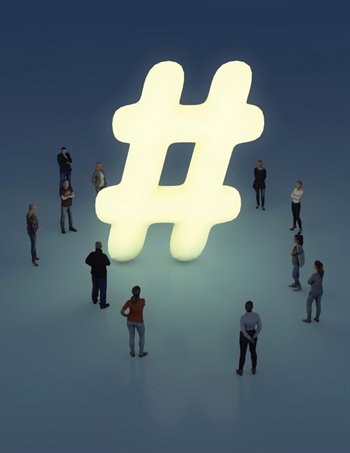February 2017 | Volume XXXV. Issue 1 »
From Hashtags to Better Readers’Advisory
January 17, 2017
Hannah Rapp, Glen Ellyn Public Library

Hashtag activism has been getting a lot of flak these days, and often for good reason. After all, a hashtag isn’t directly affecting anything. But as the success of the #WeNeedDiverseBooks movement shows, there’s a lot of room for hashtags to do good—assuming they are followed by action. We Need Diverse Books (WNDB) has done just that, going from hashtag to full-fledged nonprofit that works to increase diversity in the world of children’s literature and publishing. As librarians, I think most of us agree that this is a cause we should get behind, but it can be hard to know how.
When #WeNeedDiverseBooks started trending over two-and-a-half years ago, I thought it was a great idea, and enjoyed hearing the conversations about what people wanted from diverse books. But it wasn’t until one of my teen volunteers selected this as a topic for a blog entry that I really started to see how important this could be for our patrons, and to think about ways I could incorporate the movement into my own library. Ever since then, I have been working on ways to get diverse books into the hands of teens who will benefit from, or even just enjoy, these mirrors of their own experiences or windows into the experiences of others. It hasn’t been easy, but after two years of hard work I have made promoting diverse books part of my daily work, built a well-rounded collection, and succeeded in getting many of these books off the shelf and into the hands of the community.
The biggest hurdle to building a diverse readers’ advisory and developing an appropriate collection has been the amount of work it takes! Mainstream publishing is dominated by white, straight, cisgender, abled people—in terms of both authors and characters. Seeking out diverse titles for displays, book lists, and personal reading takes more time than picking up the latest Sarah Dessen or John Green. But the extra time has been well worth it. By putting in the effort to make sure that displays feature authors of color, LGBTQ+ authors, authors with disabilities, and more, as well as characters with diverse identities, I get the pleasure of seeing teens recognizing themselves on the shelves of the library, or picking up a book reflecting a reality they might not otherwise experience. By making sure my book lists are inclusive of a wide variety of experiences and identities, I ensure that teens asking for book suggestions know the library is a place for them. And most importantly, by making an effort—and at first, it was a big effort—to diversify my own reading, I now have a wide selection of books for every reader at my fingertips, a selection that is slowly coming to reflect the diversity of the world around us.
There’s no denying that since diverse books are still only a small portion of publishing, it takes work to get them into the hands of readers. When a teen from the high school gay-straight alliance visits the library to find a book I talked about on a visit, when a Muslim girl sees herself as a superhero on the cover of the newest Ms. Marvel, when a privileged white teen gains empathy for an economic or racial experience they may never know, it is worth the work. And the good news is, we’re not on our own. Sites and organizations like We Need Diverse Books, Rich in Color, Disability in Kidlit, LGBTQ Reads, and so many more offer book lists, recommendations, publishing information, and a critical viewpoint that can help not only build a diverse collection, but share tools to help you incorporate these books into readers’ advisory.
Librarians have the ability, and with it the responsibility, to push for changes in traditional publishing. When we purchase a book whose author is part of an under-represented group, we tell publishers that books like these can sell. When we recommend them, promote them, and introduce them to potential new fans, we tell publishers that teens can and will engage with these books. By bringing great books to a wider audience, we encourage the creation of high-quality literature for children and teens. When we move beyond the traditional bestsellers to make sure a wide variety of experiences and identities are represented in every display, book list, or book talk, we ensure that a larger group of teens can find a home in books. Perhaps some of those same teens will even find a welcome home in publishing and librarianship one day. Going from the hashtag #WeNeedDiverseBooks to real action is just one of the ways we can positively impact books, publishing, and most importantly, the people in our communities that we serve.

 iREAD Summer Reading Programs
iREAD Summer Reading Programs Latest Library JobLine Listings
Latest Library JobLine Listings